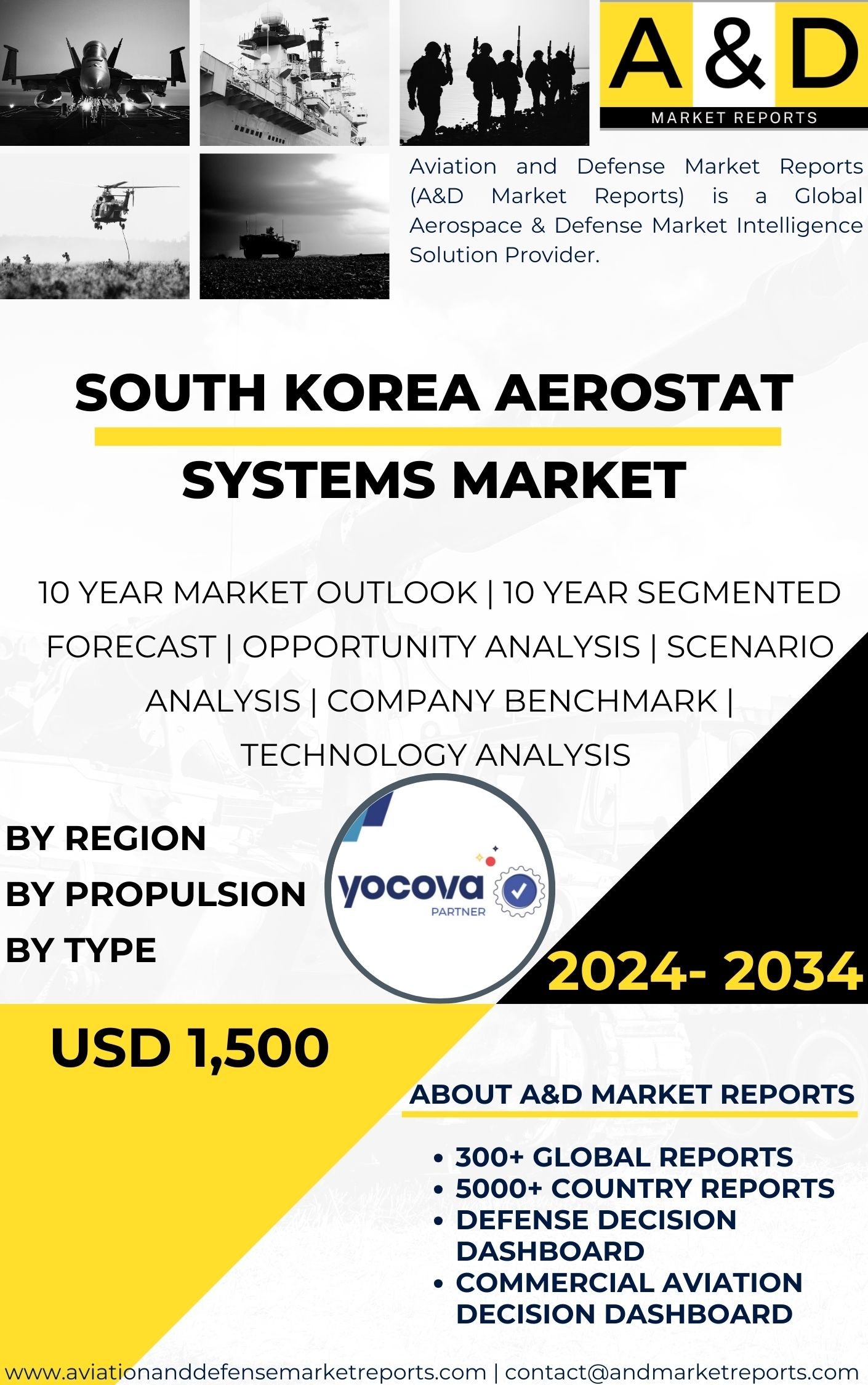Description
South Korea Aerostat Systems Market
In recent years, South Korea has witnessed significant developments in its defense sector, driven by regional security concerns and a growing need for advanced surveillance and intelligence capabilities. Among the various defense technologies, Aerostat Systems have gained prominence as effective solutions for persistent aerial surveillance and communication. These tethered, lighter-than-air platforms have proven invaluable for border monitoring, maritime surveillance, disaster response, and military operations. This article provides an in-depth analysis of the South Korean Aerostat Systems market, including its current state, major players, applications, technological advancements, challenges, and future growth prospects. The South Korea Aerostat Systems market has shown substantial growth over the past decade, reflecting the country’s efforts to bolster its defense capabilities and address regional security challenges. The deployment of Aerostat Systems has expanded across various sectors, including military and civil applications. The South Korean government and defense authorities have recognized the strategic importance of aerial surveillance and reconnaissance, leading to increased investments in Aerostat technology.
Several South Korean companies have made significant strides in the development and production of Aerostat Systems. One of the key players in this domain is LIG Nex1, a leading defense contractor specializing in aerospace and defense electronics. LIG Nex1 has been actively involved in the design and manufacturing of Aerostat Systems for both military and civil applications. Their systems offer long-endurance surveillance capabilities and are highly regarded for their reliability and cost-effectiveness.
Furthermore, Hanwha Aerospace, another major player in the South Korean defense industry, has also ventured into Aerostat technology. Hanwha Aerospace’s Aerostat Systems are equipped with advanced sensors and communication equipment, making them ideal for border surveillance and disaster management.
Additionally, the Agency for Defense Development (ADD), a government research agency, has been at the forefront of indigenous Aerostat development projects. Collaborating with local defense companies, the ADD aims to strengthen South Korea’s self-reliance in the Aerostat Systems market and further enhance its surveillance capabilities.
The versatile nature of Aerostat Systems allows for a wide range of applications in both military and civil domains. In the military sector, these platforms are extensively used for intelligence, surveillance, and reconnaissance (ISR) operations. The ability to loiter at high altitudes for extended periods enables Aerostats to provide persistent surveillance over critical areas, borders, and coastlines. They also act as force multipliers, enhancing situational awareness and supporting ground operations.
In the civil sector, Aerostat Systems find applications in disaster management and public safety. During natural disasters or emergencies, these platforms can be rapidly deployed to provide real-time aerial surveillance, aiding in search and rescue missions and damage assessment. Additionally, Aerostats are used for monitoring and securing large-scale events, crowd management, and enhancing communication in remote or challenging terrains.
Technological advancements have played a vital role in enhancing the capabilities of South Korean Aerostat Systems. Modern systems are equipped with state-of-the-art sensors, high-definition cameras, and communication equipment, providing real-time data transmission to ground stations. Advances in aerodynamics, materials, and tethering technology have contributed to improved stability, endurance, and payload capacity of Aerostats.
Moreover, the integration of artificial intelligence and machine learning algorithms has enabled automated target recognition, data analysis, and decision-making processes, significantly reducing the operator’s workload and enhancing the system’s overall effectiveness.
Despite the positive developments, the South Korean Aerostat Systems market faces certain challenges. One of the primary concerns is the vulnerability of tethered platforms to potential threats, including hostile actions or adverse weather conditions. Ensuring the security and safety of Aerostats remains a critical focus area for further development.
Additionally, the integration of advanced sensors and communication equipment can significantly impact the weight and performance of the Aerostat. Striking the right balance between payload capacity and endurance is an ongoing challenge for manufacturers.
Looking ahead, the future growth prospects for the South Korean Aerostat Systems market appear promising. As defense and civil authorities recognize the value of persistent aerial surveillance, the demand for Aerostats is expected to increase. The country’s focus on indigenous developments and collaborations with global industry players will likely drive further innovation and expansion of the market. Moreover, export opportunities may arise as South Korean companies demonstrate their expertise and cost-effective solutions to potential international customers.
The South Korean Aerostat Systems market has witnessed significant growth and innovation, positioning the country as a major player in the global aerial surveillance industry. With indigenous developments, collaboration between government agencies and defense contractors, and continuous technological advancements, South Korea is well-equipped to meet its defense and civil surveillance requirements. Challenges pertaining to security and payload capacity continue to be addressed through research and development efforts. As the demand for persistent aerial surveillance increases, the South Korean Aerostat Systems market is poised for further expansion, offering both domestic and international opportunities for growth and technological leadership.




